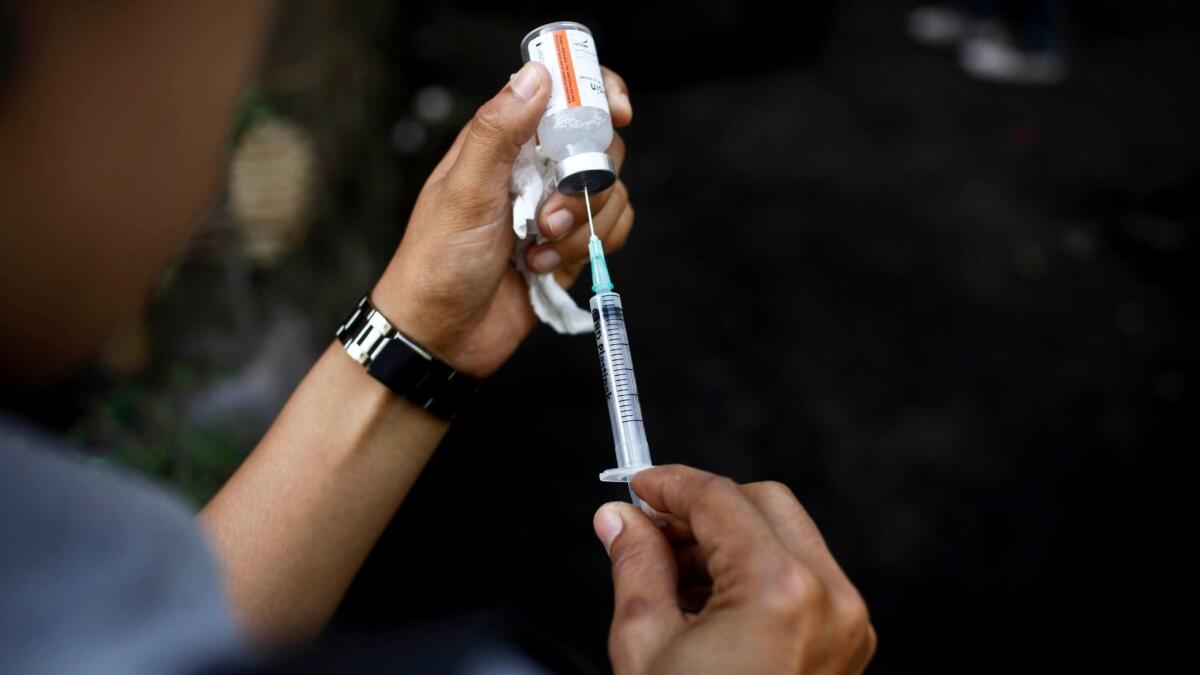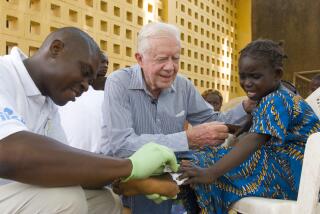We eradicated cattle plague. Now let’s set our sights on rabies

- Share via
Mankind has successfully managed to eradicate only two diseases to date: smallpox in humans followed by the deadly cattle plague, rinderpest.
These medical achievements have saved millions of lives and billions of dollars in economic losses, especially in the developing world.
But the next victory could save both people and animals from falling victim to a traumatic and fatal viral disease. Veterinarians are leading the fight and its eradication is squarely in our sights.
By controlling rabies, we stand to spare an estimated 60,000 human lives a year — an avoidable death every 10 minutes.
This horrific, virulent disease remains prevalent in developing countries, where sanitation and living conditions are poor. Some 40% of rabies victims are under age 15. And with 90% of human cases of rabies arising from dog bites, we know that the “low-hanging fruit” solution lies with tackling this neglected and underreported disease at its source.
With the right support, vaccines can be an inexpensive and instrumental solution in winning the battle against rabies. By vaccinating at least 70% of the canine population, veterinarians stand a good chance of seeing the growth of “herd immunity,” which is sufficient to slow the spread of rabies until it dies out. Not only is this our best chance of eliminating human cases of rabies transmitted by dogs, but it also lessens the need to cull stray dogs, which is often be carried out inhumanely.
We have already seen promising progress to support this. Latin America is leading the charge on this front. An ambitious campaign to vaccinate 40 million to 50 million dogs a year in the region has reduced the number of deaths to rabies by 95%. It is possible that rabies could be eliminated across the region by 2022.
Among the reasons for this effort’s success to date has been a mixture of regional collaboration, stakeholder engagement, public awareness campaigns and, crucially, the research and vaccine development by veterinary scientists.
However, just like ending the scourges of smallpox and rinderpest — an infectious viral disease of cattle that was eliminated in May 2011 — meeting the target of ending dog-transmitted rabies by 2030 will be no easy feat.
A comprehensive global eradication effort would require the cooperation of governments worldwide to support a rabies vaccine requirement, as well as ensuring compliance of all dog owners.
Veterinarians then face an enormous challenge to vaccinate all dogs and other mammals — including strays — that might be carrying rabies.
But through innovations in veterinary science and animal health, there is growing confidence that we can control rabies in a humane and effective way.
The development of an oral vaccine could offer a solution to the challenge of immunizing wild animals, for example. We have also seen exciting advances in the development of a modern foot-and-mouth disease vaccination, which is oil-based instead of water-based to prolong immunity levels.

We can learn from the success of the rinderpest eradication strategy, which delivered a heat-stable vaccine so that it could be delivered in remote, subtropical conditions where cool storage is not practical. With such creativity, we may also find a way to vaccinate hard-to-reach animal populations.
As well as vaccinating animals, we must also work with a “One Health” approach, a strategy that includes other important measures such as humane population control of dogs through spay and neuter programs, community education about rabies and dog bite prevention, the importance of dog bite medical treatment, and availability of rabies vaccine therapy after exposure. Almost 30 million people receive treatment every year for suspected rabies after an animal bite, while pre-exposure vaccines are also available for those at high risk.
Rabies is a harrowing disease that brings suffering to tens of thousands every year. It is preventable, but veterinarians cannot achieve it alone. Veterinarians must be empowered with new, breakthrough vaccines and the ability to deliver them to vulnerable communities.
With that, we can eliminate one more cruel blight on this world.
Dr. René Carlson is president of the World Veterinary Assn.
More to Read
Sign up for Essential California
The most important California stories and recommendations in your inbox every morning.
You may occasionally receive promotional content from the Los Angeles Times.













